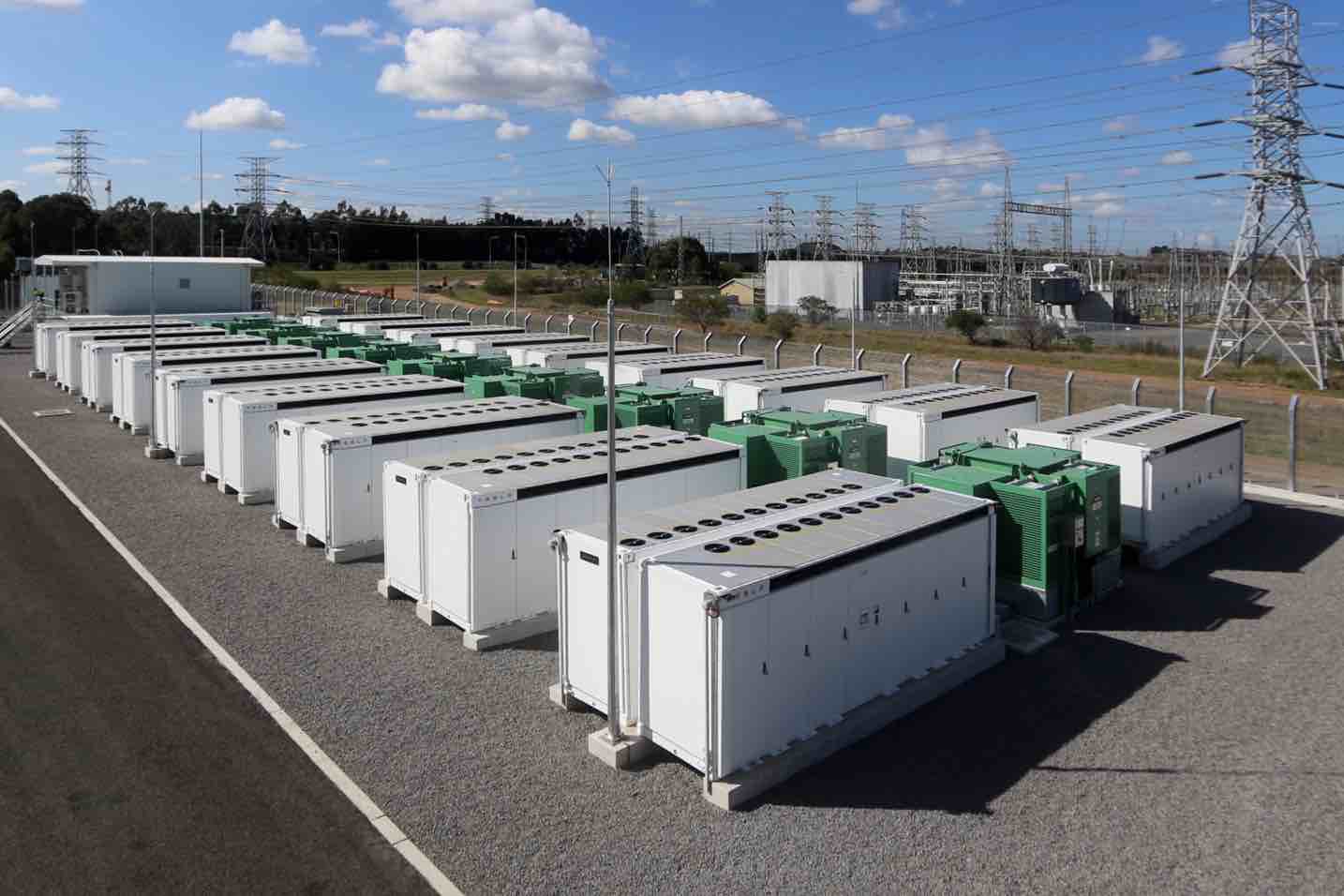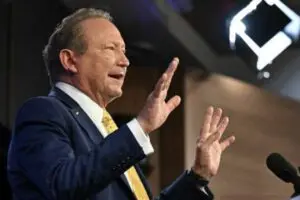Iron ore billionaire Andrew Forrest’s Squadron Energy has set its sights firmly on the battery storage market after its surprise $4 billion plus purchase of the CWP Renewables portfolio earlier this week.
The acquisition of CWP lifts Squadron’s pipeline and portfolio of large-scale renewable energy projects to around 20GW, and it also includes 11 co-located battery storage projects to help it meet customer demand for “firmed renewable” capacity.
The first battery storage project to get off the ground will be the 30MW one-hour Sapphire battery, next to the wind farm of the same name in northern NSW, which CWP claims to be the first in Australia to be retrofitted to an existing wind or solar plant at the same connection point.
The next big battery project – Squadron CEO Eva Hanly told this week’s episode of RenewEconomy’s popular Energy Insiders podcast – is expected to be the much larger 150MW, two-hour battery storage project at Uungula, next to the construction ready 414MW wind project of the same name.
The biggest battery in its portfolio is the 2GWh battery that is part of the Clarke Creek renewable energy hub in Queensland, which Squadron says is the biggest hybrid project in Australia. The first 450MW stage of the wind component is already under construction.
But there are a host of other battery projects.
The portfolio list describes 11 different battery projects, including three 150MW projects at its Goulburn, Gundagai and Jeremiah wind farms, a 400MW battery at the Spicers Creek wind project, and another five unidentified batteries – all of 150MW (and presumably two hours storage) in New England and Western Victoria.
“I am a huge fan of large-scale grid storage,” says Hanly, who was involved in the installation of the Wallgrove battery in western Sydney during her previous role at Transgrid.
“I’ve seen the amazing services that large-scale storage can provide into the system. And inertia is, of course, one really important one,” Hanly told Energy Insiders.
“So we were thrilled that the CWP portfolio had a number of storage assets in it. We also have plans for a very large two gigawatt-hour battery up at our Clarke Creek project. So yes, we will be a huge buyer of storage in the coming years.”
Squadron’s purchase of CWP came in the same week that state and federal energy ministers agreed on a new Capacity Investment Scheme that will effectively underwrite the storage needed to support wind and solar and help replace the coal and gas plants that will leave the grid in the coming decade.
Hanly says Squadron is keen to see the details of the scheme, although it is not clear that Squadron will be waiting around to compete in the various auctions that will be held.
“We don’t see a problem at all, finding that capital, both from within the Squadron group, as well as other investors, such as superannuation funds,” Hanly says.
“At Squadron where we’re a different sort of energy company. We’re nimble, we’re entrepreneurial. And we can make decisions and move very quickly. So there should be absolutely no slowdown in CWP’s growth. In fact, we hope to see it ramp up.”
Hanly would not comment on reports that Squadron paid more than $4 billion for CWP and its huge portfolio, but said price was not the only factor – as an Australian company Squadron did not have to go through as many regulatory hoops as its rival bidders.
She says one of the big attractions of CWP was the different geography of its portfolio – Squadron’s pipeline was mostly in Queensland, including its proposed 10GW renewable super hub in the north, while CWP had strong interests in NSW and Victoria.
Hanly expects the more controversial LNG import terminal and gas generator being built at Port Kembla will be operating by the end of 2023, but she says the goal is to transform it into green hydrogen at the earliest possibility.
“As you would know we are a renewable company, but we see … gas playing an important role in the very short term, but our plan is to transition that project to a green hydrogen project as soon as we can.”
To hear the entire interview with Hanly, and the entire episode of the latest Energy Insiders podcast, please click here: Energy Insiders Podcast: Andrew Forrest’s big Australian power play
See also RenewEconomy’s Big Battery Storage Map of Australia











